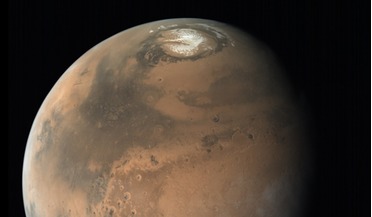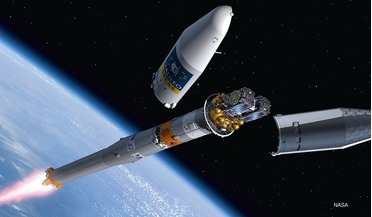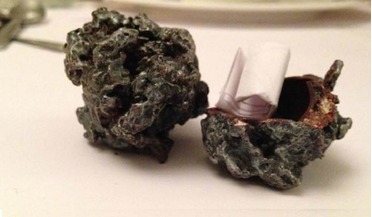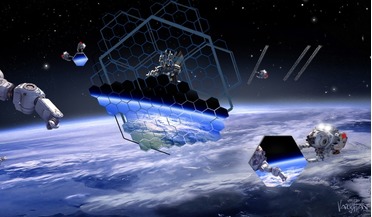 April 2024
Terraformal dreaming
April 2024
Terraformal dreaming
... globe might just do the trick. Others focus on the frozen ice caps, which contain both water and carbon dioxide. We could melt the caps with orbital mirrors, or paint them with black soot, or cover them...
 27 May 2019
Third largest water reservoir on Mars found
27 May 2019
Third largest water reservoir on Mars found
... the third largest water reservoir on Mars after the polar ice caps. The newly discovered water is of the frozen variety and is...ice and sand are a result of retreating and advancing ice caps as the planet underwent periodic ice ages - much like Earth...
 December 2014
Terraforming Mars: from CFCs to Total Recall
December 2014
Terraforming Mars: from CFCs to Total Recall
... might this CO2 come from? One idea is to mobilise the CO2 ice stored in the Martian polar caps and in the regolith (the Martian soil). But the amount of CO2 stored in these reservoirs is probably only...
 March 2015
On-orbit satellite servicing, insurance and lessons of Palapa B2 and Westar 6
March 2015
On-orbit satellite servicing, insurance and lessons of Palapa B2 and Westar 6
... pieces of retired satellites. Likewise, NASA’s Robotic Refuelling Mission has already demonstrated blanket and wire cutting, cap and fastener removal and the transfer of fluids on the exterior of the International Space Station. This is a major...
 February 2016
Danish Surprise for ISS Crew
February 2016
Danish Surprise for ISS Crew
...,” says Schmidt, “I got a call from ESA, saying ‘Hey, Thorsten, bear in mind....maybe it’s 25 degrees, not 20!” And to cap it all Mogensen had stressed one thing - no freeze drying. So it has to be real food. Thorsten Schmidt (left) and...
 August 2017
On-orbit assembly will deliver major benefits in coming decade
August 2017
On-orbit assembly will deliver major benefits in coming decade
... MEV will autonomously rendezvous with the Landsat spacecraft and then tele-robotically cut wires, remove caps and refuel the satellite. Landsat-7, an unprepared ‘client’ built long before MEV technology was available, will...